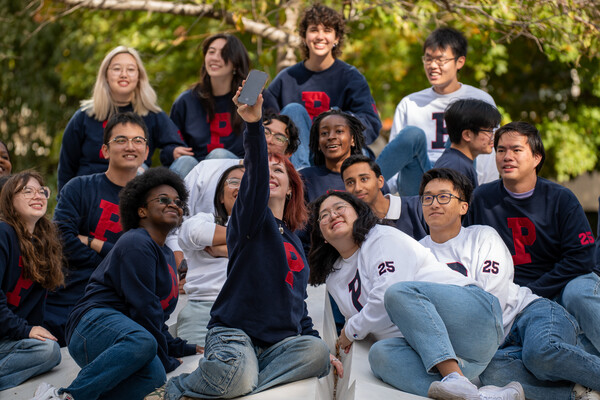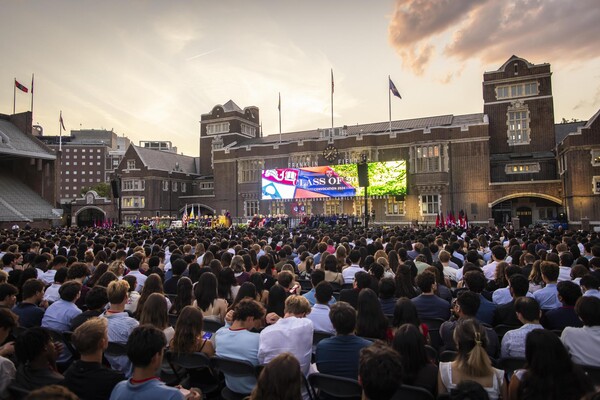Vice or virtue? Variety affects the choice
Jonah Berger looks at the world around him and sees an avalanche of choices for consumers.
A marketing professor at Penn’s Wharton School of Business, Berger’s research often stems from his own experiences, so when he repeatedly found himself contemplating what motivated him to choose one product over another when his options seemed almost limitless, he acted.
“I often found myself staring at a restaurant menu trying to figure out what to get,” he says. “I wanted to order a juicy bacon cheeseburger with onions, but I didn’t want to be too unhealthy. So I thought about getting a salad, which is not as delicious. I often felt this pull between the virtuous item and the vice. I wondered whether the menu being shorter or longer affected my choosing.”
That was the central question he and two colleagues set out to answer in their study and ensuing paper, “Variety, Vice and Virtue: How Assortment Size Influences Option Choice.”
Their findings are fascinating. Because choosing from more options often is more difficult, the researchers concluded it leads people to select more virtuous choices.
“When you have to choose, you tend to say, ‘How can I justify that what I’m picking is right?’” Berger says. “The mechanism used in choosing between more options is difficult, and it causes us to search for justification.”
Berger and his fellow researchers from the University of California, Los Angeles, and Stanford University conducted five experiments exploring the nature of choice using ice cream, fruit and electronic equipment.
In one, participants were shown pictures of ice cream and asked to select a flavor. The smaller assortment had two choices: one full-fat and one reduced-fat option. In the larger assortment, there were 10 choices, and half the options were reduced fat. Of the participants presented with the smaller assortment, 20 percent selected reduced-fat ice cream, while 37 percent of those who had more choices selected reduced fat.
“We chose different categories to show that this effect is broad and general,” Berger says. “We picked virtuous options versus vice options, and I use the term ‘vice’ lightly. It’s a little more fun to get the full-fat ice cream rather than reduced fat.”
In another experiment, a tray with fruit and baked goods was placed at two entrances of a building on the Stanford campus, with a sign reading, “Please help yourself to one item.” At one entrance, the researchers placed a tray containing just two types of fruit and two types of cookies. At another entrance, they put a tray with a larger selection so that people were presented with six types of fruit (bananas, red and green apples, pears, tangerines and peaches) and six types of baked goods (assorted cookies as well as croissants and banana nut muffins). While 55 percent of the participants chose fruit over baked goods from the smaller assortment, 76 percent did so when choosing from the larger assortment.
“If you’re choosing 12 types of breakfast things rather than six, it’s easier to justify the healthier thing,” Berger says.
Conventional wisdom once said that the more choices a consumer had, the better off he or she was. “We’re a country that likes choices,” Berger says. “If you like strawberry yogurt and you go to the store and see strawberry banana yogurt and 25 other varieties, we thought it was more likely that you would buy yogurt.”
But about a decade ago, that line of thinking changed. “There was a really influential article published that showed with too much choice, people get de-motivated and they tend not to make purchases,” he says. “We don’t know what to choose, and we end up throwing up our hands and giving up.”
That served as an interesting backdrop to this study, but did not directly affect it.
“This paper focuses on how the number of options, given that people have to make a choice, influences what they end up choosing,” he says. With at least a portion of that question answered, Berger is turning his attention to how the number of attributes provided in each option affects choice.
“When you rent a car, you might choose based on a couple of attributes, a two-door versus a sedan with four doors,” he says. “But what about if you’re presented with more attributes, like miles per gallon, or the number of suitcases you can fit in the trunk?”
Questions Berger, waiting at the counter of a Hertz or Avis, may have asked himself.







